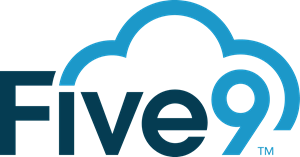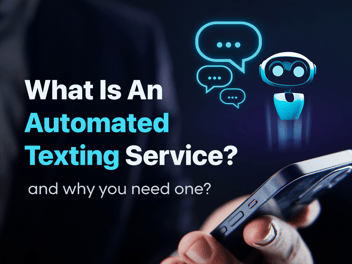10 Tips to Reduce Call Center Costs
.png)
10 Tips to Reduce Call Center Costs
The secret to any great company's customer service is a call center on the front line. Call center agents have multiple roles, including answering inquiries, troubleshooting difficulties, handling tedious sales follow-ups, and maintaining the brand's reputation.
However, as businesses strive to deliver top-notch service, the expense of maintaining these operations can often spiral out of control—like a leaky faucet that keeps dripping away revenue.
Fear not. Effective strategies exist to cut call center costs without sacrificing quality. So, grab your favorite brew and learn how to streamline operations for maximum efficiency.
Importance of Reducing Call Center Costs
The budget of a business should always be optimized. Think of it like tweaking a machine to run smoother and more efficiently. To do this, you need to understand where your money is going.
Various factors impact call center costs, including setup, ongoing fees, and service charges, which also differ depending on business type and operation.
Smart spending enables agents to handle inquiries efficiently, fostering customer satisfaction and loyalty. Additionally, saving on call center expenses frees up resources for innovation, marketing, and business expansion, providing a competitive advantage.
Analyzing the Current Situation
Businesses are constantly striving to strike a delicate balance between providing exceptional customer service and managing costs effectively.
With staggering figures revealing that $1.6 trillion is lost annually in the U.S. because of poor customer service, finding the right solution becomes increasingly urgent.
It's a challenge that demands a nuanced approach. You will need to consider the aspects of reducing call center costs without sacrificing service quality.
Evaluating Call Center Costs

Ensuring the success of any campaign hinges on maintaining effective customer experiences while streamlining call center costs. It's a tricky balancing act requiring a keen understanding of the various expenses influencing expenses.
Every aspect plays a crucial role, from the technology powering operations to the complexities of service protocols and the labor invested in each interaction.
Essentially, dive deep into your operations and take into account all aspects. Call centers can be cost-contained when their costs are evaluated comprehensively.
Call Center Expenses Breakdown
The breakdown of call center expenses reveals a complex picture. Let's take a closer look at each.
- Service Protocols and Standards: Guidelines and procedures ensuring consistent, high-quality service, from scripted interactions to meeting response time goals.
- Labor Expenses: This includes salaries, wages, benefits, and incentives for call center staff. Investing in skilled agents boosts efficiency, service quality, and morale, impacting operational success.
- Technology Investments: Call centers invest in infrastructure like telephony systems, customer relationship management (CRM) software, and AI tools. These technologies enhance efficiency, improve customer interactions, and should reduce costs over time.
- Facility, Equipment, and Utility Costs: These cover physical space, furniture, computers, and utilities like electricity and internet. Efficient management optimizes resources and fosters a productive work environment.
- Outsourcing and Third-Party Services: Some functions like customer service or IT support may be outsourced. While this can offer cost savings and flexibility, careful evaluation is needed to align with business objectives.
Understanding these factors allows businesses to adopt targeted strategies to reduce expenses while ensuring optimal performance.
Identifying Areas of High Expenditure
The stark reality of operational costs emerges: acquiring a new customer is five to 25 times more expensive than retaining an existing one. This revelation highlights the need to identify spending patterns and find excess spending areas.
Assessing Operational Costs
Operational costs serve as the lifeblood of any call center. When done right, you can maintain (and even improve) efficiency while reducing costs at the same time.
- Labor Expenses Optimization: Maximize productivity and minimize costs through efficient scheduling, incentives, and reduced turnover.
- Technology Investment Rationalization: Evaluate and optimize technology to align with business goals, reducing redundancies and maximizing cost-effectiveness.
- Streamlining Processes: Identify and eliminate inefficiencies through automation and standardization to enhance productivity and reduce costs.
- Targeted Cost-Saving Measures: Proactively reduce costs without compromising quality, including contract renegotiation and leveraging technology.
Businesses can unlock new avenues for efficiency in the marketplace by pinpointing cost-saving opportunities in their operations.
Labor Costs Analysis

Labor costs are a critical component of call center expenses. If not done correctly, cutting costs on the welfare of your employees can result in serious negative consequences.
- Salaries and Wages: Payment for work done by call center agents, making up the most significant part of labor costs.
- Employee Benefits: Non-wage perks offered to call center staff, such as insurance, retirement plans, and bonuses.
- Training and Development Expenses: Costs associated with educating and enhancing the skills of call center employees, covering training programs, materials, and trainers' fees.
- Operational Efficiencies: Measures to streamline call center processes, reducing waste and errors to improve productivity and minimize labor costs while maintaining service quality.
With a clear understanding of labor costs, call centers can boost budget efficiency while improving productivity.
Average Cost per Contact
The Average Cost per Contact is a metric used to gauge the efficiency of a call center's operations by measuring the average cost incurred each time a customer contact is handled. Basically, it goes like this:
(Average Cost per Contact = Total spending across capital and operational expenditures / Number of successful calls within a given period)
This key performance indicator (KPI) measures all the expenses associated with managing customer interactions, including both capital investments in technology and operational expenditures like labor costs and overhead.
It's an essential tool for call center managers as it provides insights into how efficiently resources are being utilized and allows for better decision-making regarding resource allocation.
Strategies to Reduce Call Center Costs

Minimizing call center costs requires a strategic approach considering the multiple factors affecting operations. The goal is clear: streamline operations, maximize resources, and enhance customer satisfaction.
1) Implement Self-Service Options
Why not let customers take the wheel and find answers to their questions directly? Implementing self-service options can significantly reduce call center costs when customers can find answers to common questions on their own.
Automated self-service typically only costs around $0.25 cents per interaction, far less than live agent interactions. With self-service support options like virtual help desks and FAQ pages, customers can resolve issues without needing to contact the support team.
2) Streamline Call Routing Operations
While manual call routing may seem straightforward and cost-effective initially, it can quickly become inefficient and costly as call volumes increase.
You can adapt intelligent call routing strategies to optimize resource allocation and ensure that customer queries are efficiently handled. You can consider, for instance, skills-based routing and data-directed routing.
Skills-based routing matches callers with agents based on their specific skills and expertise. Call transfers are minimized, and first-call resolution rates are improved by assigning incoming calls to agents who are most qualified to assist customers.
Similarly, data-directed routing takes call routing to the next level by leveraging data intelligence to make routing decisions. In real-time, organizations can dynamically route calls to the most suitable agent according to caller location, previous interactions, and agent skills.
Streamlined call routing operations contribute to a more efficient and cost-effective call center environment.
3) Try a Remote Work Setup
Shifting to a remote work setup can deliver substantial cost savings for call centers. Considering the widespread adoption of remote work during the pandemic, it's no surprise that 87% of employees prefer remote work methods.
Remote work offers employees freedom and flexibility, boosting satisfaction and retention. Implementing flexible work arrangements cuts overhead costs and meets modern workforce expectations. Companies can then position themselves as attractive employers, appealing to both existing employees and prospective hires.
However, it's essential to acknowledge that remote work may work for everyone. Some employees may require additional support or infrastructure adjustments to effectively transition to remote work. Addressing technical support needs and ensuring that remote workers have access to necessary resources are critical considerations.
Despite potential challenges, the benefits of remote work, including cost savings and enhanced employee satisfaction, make it a compelling option for call centers to explore.
4) Master Your Call Center Forecasting
Hiring or scheduling too many agents can quickly become costly. To strike the right balance between service quality and cost efficiency, accurate estimation of call volumes is essential. This is where forecasting comes into play.
Call center forecasting involves predicting the volume of incoming calls that agents will need to handle within a specific period accurately. Managers can make informed decisions about staffing levels and resource allocation by analyzing historical data, trends, and other relevant factors.
The most suitable forecasting method may depend on the amount of historical data available, the range of your contact volume, and the level of complexity required. Choosing the right one helps you calculate forecasts more accurately.
Mastering your call center forecasting ensures that the right number of agents are available to handle customer inquiries efficiently, minimizing both under-staffing and over-staffing costs. This, in turn, lets organizations align their workforce with anticipated demand, ultimately improving operational efficiency and competitiveness.
5) Take Advantage of Workforce Productivity Analytics
Workforce productivity analytics involve tracking and optimizing output to enhance operational efficiency. In call centers, this means collecting, measuring, and analyzing key performance indicators (KPIs) and metrics to improve processes.
Although KPIs are commonly tracked, they hold untapped potential for cost reduction. For instance, monitoring AHTs can lead to smoother workflows and reduced staffing costs. Tracking call volume helps in allocating resources effectively, while improving CSAT scores can enhance customer loyalty and reduce the costs of acquiring new customers.
Analyzing these metrics lets managers gather insights into team performance, identify inefficiencies, and guide agents toward more efficient workflows.
6) Optimize Call Center Agents' Performance
A key component of providing efficient and effective customer service is maximizing the performance of your call center agents. This involves several key strategies to maximize agent productivity and minimize operational costs.
- Enhanced Customer Satisfaction: Well-trained agents promptly address inquiries, fostering loyalty and positive word-of-mouth.
- Improved Operational Efficiency: High-performing agents handle calls efficiently, reducing wait times and streamlining operations.
- Cost Savings: Efficient call handling lowers operational expenses by minimizing resource usage.
- Increased Revenue Potential: Satisfied customers drive repeat purchases and referrals, boosting sales.
- Competitive Advantage: Superior service through trained agents sets businesses apart, positioning them as industry leaders.
Even if your team is already doing well, optimizing their performance could help you maintain or even improve what they do while still being able to reduce costs.
7) Hire Well-Trained Agents
Reduced call center costs can be achieved through hiring well-trained, well-equipped agents. This involves prioritizing individuals with strong problem-solving and conflict-resolution skills, as well as providing comprehensive training and ongoing development opportunities.
Investing in agent training can improve first-call resolution rates, decrease handle time, and ultimately enhance overall service quality.
Real-time call monitoring and speech analytics tools are incredibly useful during the hiring process. They enable businesses to identify top talent and ensure that agents are adequately prepared to meet customer needs.
8) Enhance Agent Productivity through Training and Development Programs
Implementing comprehensive training and development programs lets businesses empower agents to maximize productivity and deliver exceptional service.
It's also important to consider some processes if it's time to let them go. For instance, the business landscape continues to evolve, so traditional cold calling methods give way to more modern and efficient solutions.
Utilizing Cloud-Based Call Center Software
Cloud-based call center software offers businesses unparalleled flexibility and scalability, making it a cost-effective solution for managing customer interactions.
With cloud-based platforms and Computer Telephony Integration (CTI) technologies that utilize the internet's scalability, businesses can significantly reduce hardware and maintenance costs. Additionally, cloud-based solutions enable businesses to decrease outsourcing expenses and simplify call center management.
Migrating to a cloud-based platform provides the agility needed to adapt to fluctuating call volumes and agent numbers, ensuring optimal performance and cost-efficiency.
Maximizing the Power of Automation
Automation has revolutionized most businesses today, and that includes call center operations. By harnessing the capabilities of CRM systems with marketing automation, sales processes can be streamlined, leads can be generated more effectively, and human error can be reduced.
Conversational AI is even projected to significantly decrease contact center agent labor costs, with an estimated reduction of $80 billion by 2026. This technology streamlines customer interactions, automating routine tasks and inquiries, significantly reducing the need for human intervention and resulting in substantial cost savings for businesses.
Embracing automation will position businesses for long-term success in today's rapidly evolving market.
9) Implement AI Texting
Introducing AI texting into call center operations can significantly increase customer engagement and reduce costs. Let AI texting handle the work for your agents, and provide seamless live call transfers when necessary.
Automated texting platforms like Meera utilize natural language processing to understand incoming texts, functioning as virtual agents that handle routine inquiries autonomously while still resembling a human-to-human conversation.
When mundane interactions are automated, businesses can boost their connect rates by up to 40%, freeing up human agents to focus on more complex tasks. Moreover, the partnership with a leading provider of cloud contact center software like Five9 ensures seamless integration and enhanced efficiency.
Meanwhile, customers benefit from AI texting as it offers quick, personalized responses, reduces wait times, and facilitates seamless communication, ultimately enhancing their overall experience with your brand. AI texting offers a win-win solution for both businesses and customers alike.
10) Re-examine Your Tech Stack
When was the last time you ran down your organization's tech stack? While a tech stack is necessary for efficient call center operations, it can become bloated over time.
Essentially, a tech stack refers to the combination of software and technology tools used to support call center operations. It includes everything from telephony systems and CRM platforms to workforce management software and AI tools.
A bloated tech stack occurs when unnecessary or redundant applications are added to the stack, leading to increased complexity, higher costs, and decreased productivity. In fact, 89% of IT professionals waste time weekly dealing with excessive applications.
Optimizing your tech stack will enable you to eliminate unnecessary tools and optimize your resources. Plus, a leaner tech stack makes it easier for agents to navigate systems and access the tools they need.
Key Takeaways
Reducing call center costs is not just about cutting expenses, but rather optimizing operations to deliver exceptional service efficiently. Here are a few things to keep in mind:
- Optimize workflows for productivity, and use self-service options to reduce call volumes and costs.
- Invest in well-trained agents to reduce ticket times and enhance service quality.
- Implement advanced call center software for faster processes.
- Regularly review and streamline your tech stack to cut unnecessary costs.
Embracing these strategies not only ensures financial success but also strengthens the call center's position to deliver exceptional customer experiences ahead of competitors.
A programmer by trade, Nick Saraev is a freelance writer and entrepreneur with a penchant for helping people achieve their business goals. He's been featured on Popular Mechanics & and Apple News and has founded several successful companies in e-commerce, marketing, and artificial intelligence. When he's not working on his latest project, you can find him hiking or painting.


.png?width=512&height=512&name=guru%20(1).png)

.png?width=199&height=109&name=salesforce-logo1-removebg-preview%20(1).png)


.webp?width=716&height=569&name=banner-img%20(1).webp)



